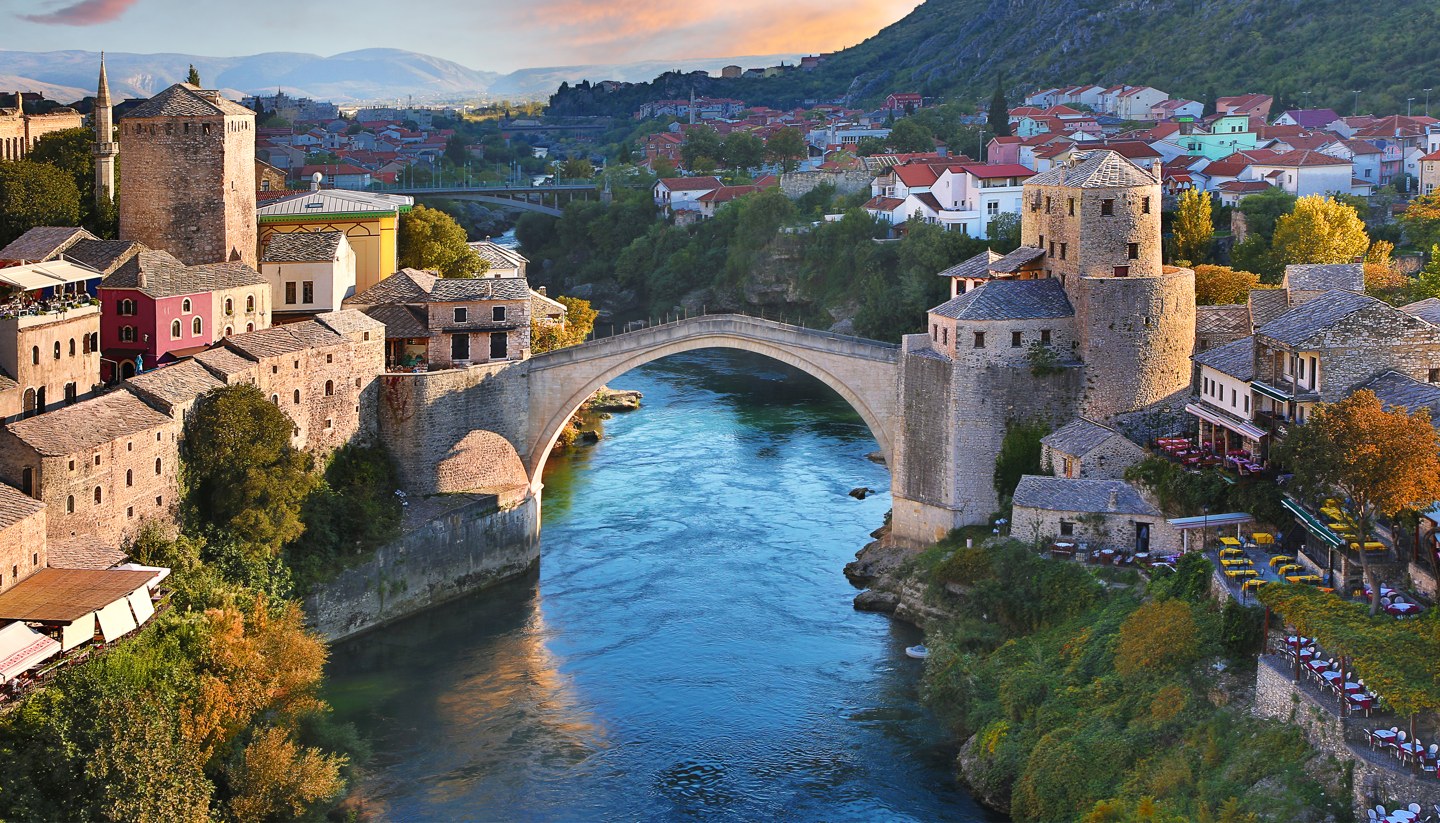Bosnia and Herzegovina Weather, climate and geography
Weather and climate
Best time to visit
Dominated by mountainous and hilly terrain, Bosnia and Herzegovina is a land of striking geographical contrasts. The country is drained by two major rivers, including the Sava River to the north, which forms a natural border with Croatia, and the Drina River to the east, flowing along the border with Serbia. Bosnia and Herzegovina's climate is as variable as the rest of the former Yugoslav federation, shaped by its diverse topography and proximity to both continental and Mediterranean influences.
The majority of the country experiences moderate continental climatic conditions, characterised by cold winters and hot summers. In the mountains, winters are particularly harsh, with heavy snowfall and sub-zero temperatures, making these areas popular for skiing and winter sports. Summers in these regions are mild, providing a refreshing escape from the heat of the lower elevations.
In contrast, the southern Herzegovina region enjoys a Mediterranean climate, with milder winters and long, hot summers. This area is known for its vineyards and olive groves, which thrive in warm, dry conditions. The country's diverse climate contributes to its rich biodiversity and allows for a variety of outdoor activities, from winter skiing in the Dinaric Alps to river rafting and hiking in the warmer months.
The best time to visit Bosnia and Herzegovina depends on the activities you're interested in, as the country offers distinct attractions in every season. For example:
Spring (March to May): Best for outdoor activities in national parks like Una and Sutjeska, with lush greenery and blooming wildflowers. Expect pleasant temperatures (15–25°C / 59–77°F) and relatively low rainfall.
Summer (June to August): Ideal for enjoying the Adriatic coastline in Neum, attending festivals like the Sarajevo Film Festival, and exploring historic towns like Mostar. Temperatures can reach up to 35°C (95°F) in Herzegovina, with milder weather in mountainous areas. Note that tourist spots may be busier.
Autumn (September to November): A quieter time to explore cities, historical sites, and vineyards during grape harvest season. The autumn foliage adds stunning colours to the countryside, with cool and comfortable temperatures (10–20°C / 50–68°F).
Winter (December to February): Perfect for skiing and snowboarding at resorts like Jahorina and Bjelašnica. Expect cold temperatures in the mountains and heavy snowfall, with milder weather in southern Herzegovina.
Required clothing
In winter, heavyweight clothing and an overcoat are essential, especially in mountainous regions where temperatures can drop significantly. In summer, lightweight clothing and a raincoat are recommended, with mediumweight layers necessary for cooler and wetter conditions in the north and at higher altitudes elsewhere.
Geography
Roughly triangular in shape and located at the geopolitical centre of the former Yugoslav Federation, Bosnia and Herzegovina shares borders with Serbia to the east, Montenegro to the southeast, and Croatia to the north and west. It has a short Adriatic coastline of approximately 20 km (12 miles) in the south, near the town of Neum, but no major ports.


